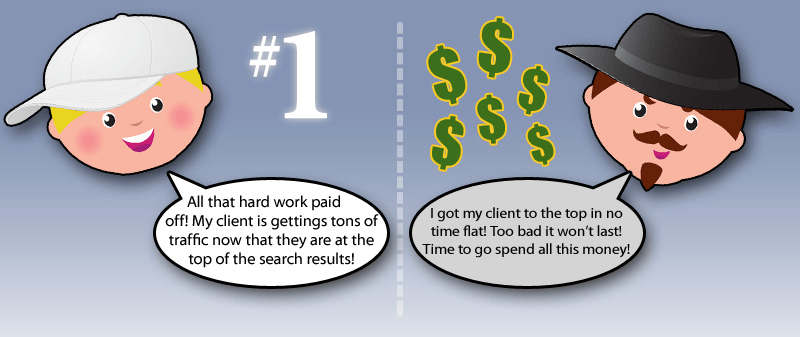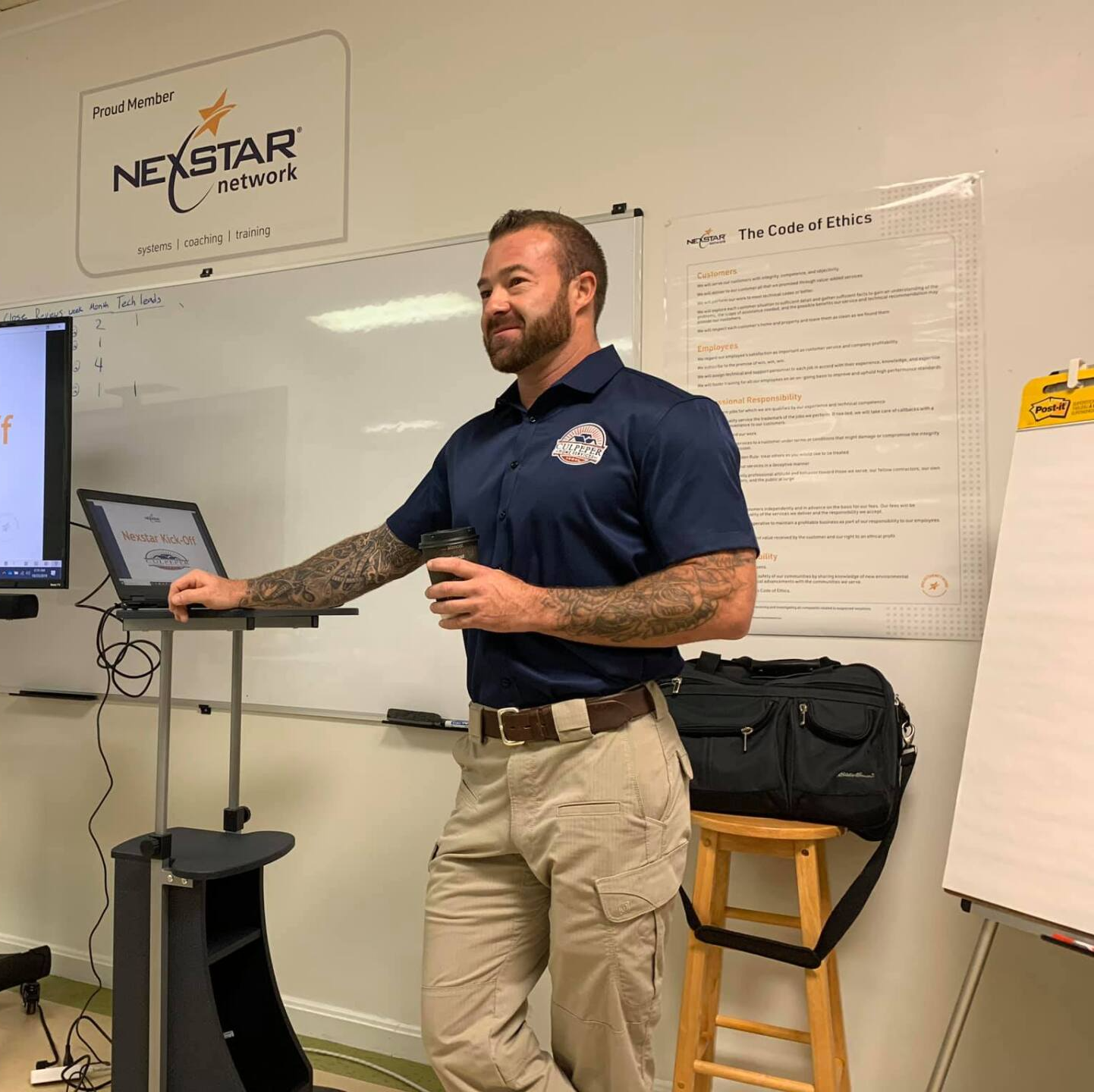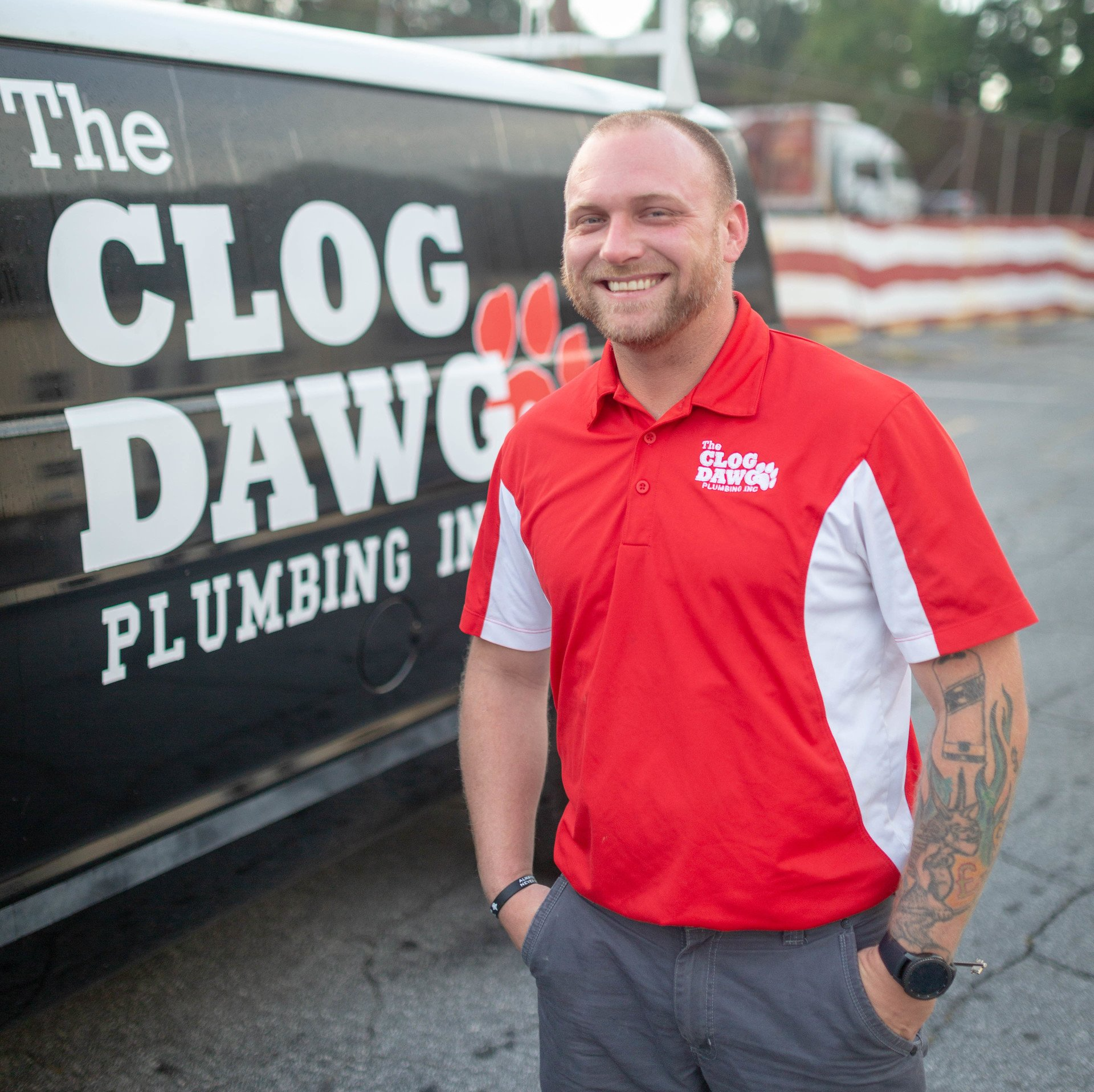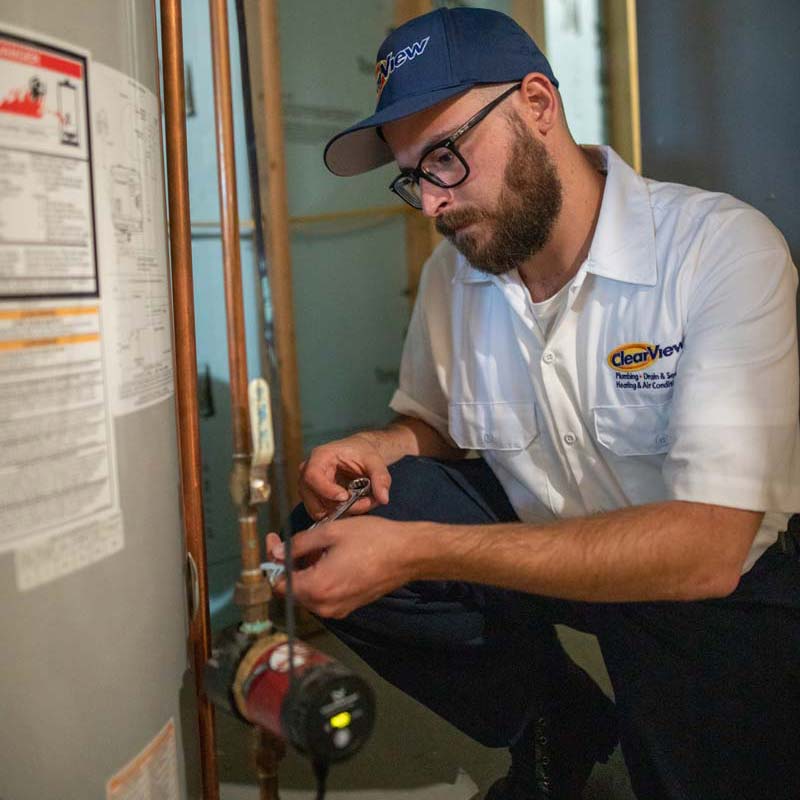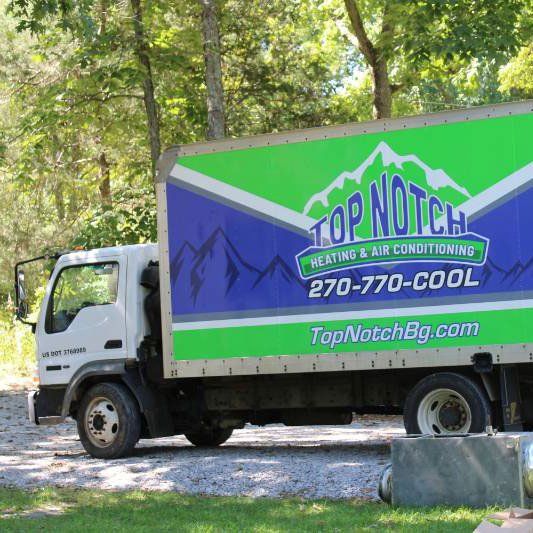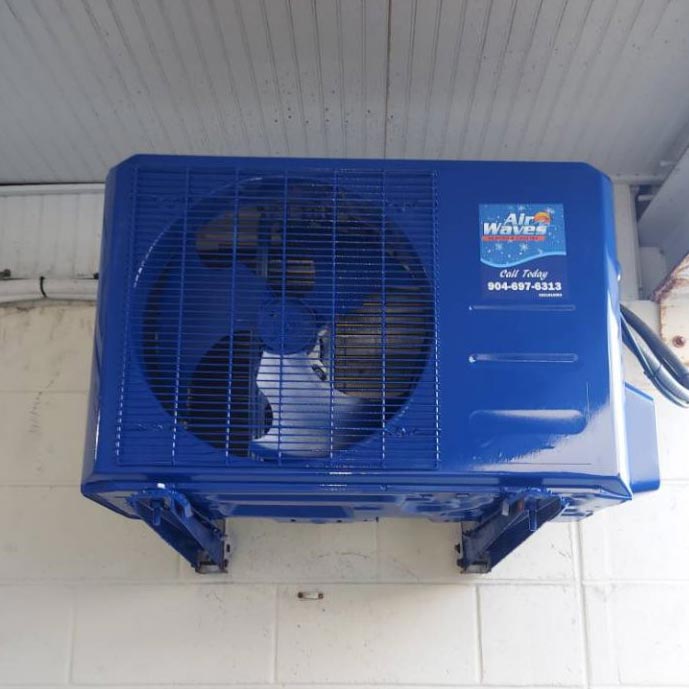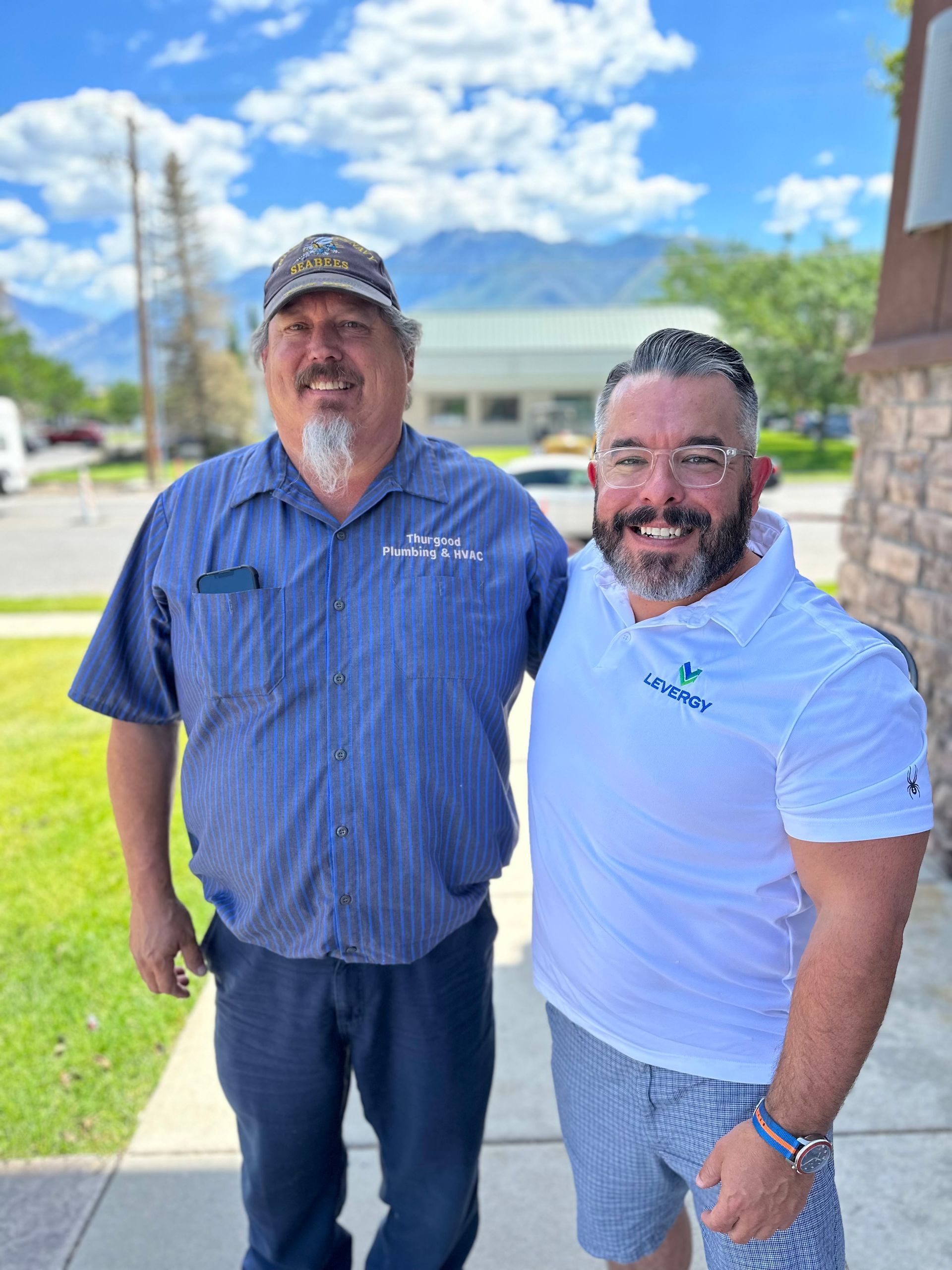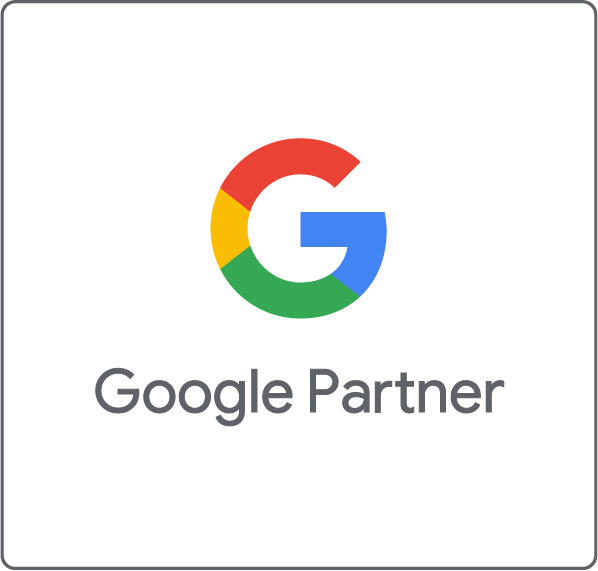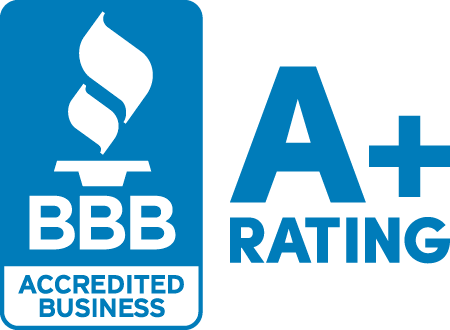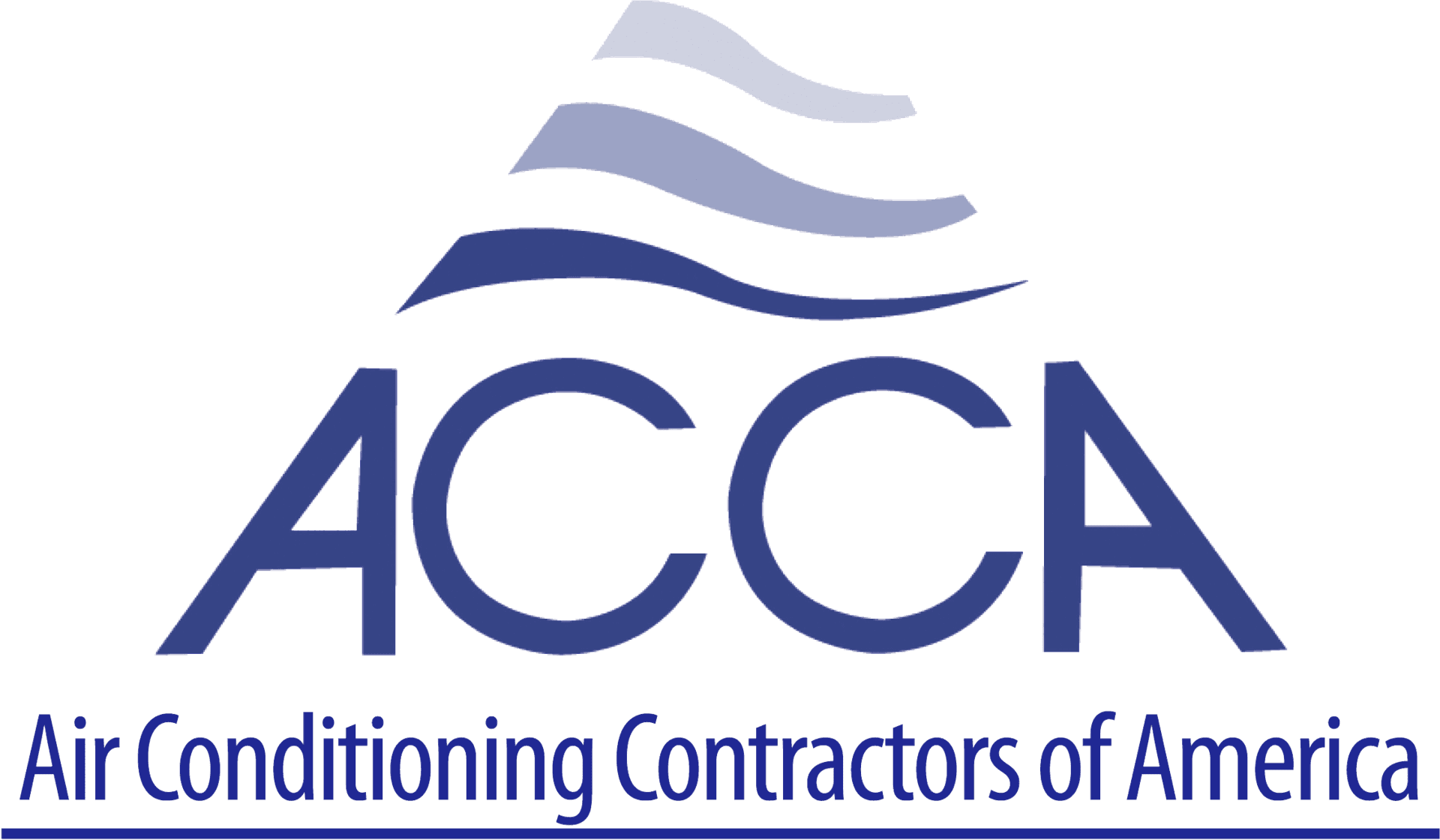Plumbing & HVAC SEO | How To Get More Leads & Make More Money
What SEO Means for Plumbing & HVAC Companies
Guess the number of blogs people publish each day.
Go on. Take a stab in the dark.
You may be surprised that WordPress users alone post over 2 million posts every single day. That comes out to 24 blogs every second.
That means that site owners published around 216 blog posts while you took the time to read these five sentences.
And that's only counting WordPress users. If we were to count all blog posts from every website platform or CMS, that number would easily be much higher. And again- that's just blog posts. Never mind static pages that companies around the globe produce each day.
This makes it kind of tough to stand out. But you have to if you want to make your website a successful one.
Think even about your business. There are hundreds of thousands of HVAC contractors and plumbers in the United States. (Nearly half a million of each, by our last count.) Standing out from the noise of all those websites is a tall order, but it's critical if you hope to stand a chance driving leads from the internet.
No wonder millions of people Google the term "SEO" each month. Of those, thousands of those searches are for " Plumber SEO
" or " HVAC SEO
". If you're a Plumbing or HVAC company, learning how to advertise your service company with SEO
is absolutely critical.
On any given day, people conduct more than 2.2 million searches. And that's just on Google-- we haven't even mentioned Bing or Yahoo or DuckDuckGo or Yandex or... you get the idea. Of of those 2.2 million searches, 95% of those searches will make a decision found on the very first page of those search results.
Because of that, showing up on the front page of Google can be the deciding factor between a business that's thriving and one that's, well, going out of business.
What Does Plumbing or HVAC SEO Even Mean?
You've probably heard that it stands for "search engine optimization", but do you have any clue what you're trying to optimize?
Is it the look of your website
? Or is it the words on your various pages? Or maybe it's the links from other sites pointing back to yours
?
Well, yep, yes, and true. It's all of those things, plus a heck of a lot more.
But let's start this guide to Plumbing or HVAC SEO
where all good things start: at the beginning.
Definition:
According to [naturally authoritative people over at] Wikipedia, SEO is "the process of affecting the visibility of a website or a web page in a search engine's unpaid results."
Alright, that may not make much sense. Let's try to make that english:
Search engine optimization (SEO)
is the science behind optimizing the web pages on your website so that your online presence shows up higher than your competitor's pages for a certain keyword.
Let's take this another step forward:
When it comes to SEO, there's your company, the search giant Google (the search engine), and the person doing the search. If you a blog on your website called how to replace a toilet
, you want the search engine (which, in 90% of all cases, is Google) to show up high on the first page of the results
for the search term "how to replace a toilet".
SEO may look like magic, but in reality, it's a calculated science that you have to exploit on every page of your site in order to increase the likelihood that Google is the magic you have to work on your article in order to make Google very likely to include your post as one of the top results whenever someone searches for that search term.
There's going to be a lot of ground we're going to cover about SEO, so buckle up.
Plumber & HVAC SEO Practices: An Overview
So, we mentioned that SEO for Plumbing and HVAC shops may look a lot like magic, but it's very much a scientific formula. But, what does that look like?
Earlier on this article, I mentioned that the overwhelming majority of online uses begin with a search engine, and of those, more than 75% of those searches are on a little website called Google. And, while 95% of the traffic goes to the links on the first page of Google, nearly 67% of all those clicks go to the first five search results. You don't have to be a wizard to realize that search engine optimization is a huge deal if you want to get in on that volume of traffic for your business.
This problem is so bad, that among internet marketers like us, there's a joke that gets thrown around the water cooler:
The 2nd page of Google is the perfect place to hide a dead body (should the need arise).
If your company's website or focused blog is anywhere except the first page of Google, it's basically like you don't have a website at all.
To even stand a chance at showing up as the first results in Google, you need to have a solid idea of how Google Search works.
How Search Works:
Now that you have a basic idea of SEO for your Plumbing or HVAC company (and how it works), let's break down some of those things in detail. Of course, Google doesn't just come out and say exactly how their search algorithm work, and while we know that there are over 200 determining factors for deciding which web pages rank, not everything is public knowledge. While we know a decent amount, there is a good amount of trial, error, and experimentation to figure out the nuances of each Google algorithm update.
But, just like Star Wars canon, you need to realize that there's a Light Side and a Dark Side to SEO.
If your company's website is anywhere except the first page of Google, it's basically like you don't have a website at all.
The Known List of 210 Attributes That Determine Your Plumbing & HVAC Company's SEO Results
1. Domain Age
2. Keyword Appears in Top Level Domain
3. Keyword As First Word in Domain
4. Domain registration length
5. Keyword in Subdomain
6. Domain History
7. Exact Match Domain
8. Public vs. Private WhoIs
9. Penalized WhoIs Owner
10. Country TLD extension
11. Keyword
in Title Tag
12. Title Tag Starts with Keyword
13. Keyword in Description Tag
14. Keyword Appears in H1 Tag
15. TF-IDF
16. Content Length
17. Table of Contents
18. Keyword Density
19. Latent Semantic Indexing Keywords in Content
(LSI)
20. LSI Keywords in Title and Description Tags
21. Page Covers Topic In-Depth
22. Page Loading Speed via HTML
23. Page Loading Speed via Chrome
24. Use of AMP
25. Entity Match
26. Google Hummingbird
27. Duplicate Content
28. Rel=Canonical
29. Image Optimization
30. Content Recency
31. Magnitude of Content Updates
32. Historical Page Updates
33. Keyword Prominence
34. Keyword
in H2, H3 Tags
35. Outbound Link Quality
36. Outbound Link Theme
37. Grammar and Spelling
38. Syndicated Content
39. Mobile-Friendly Update
40. Mobile Usability
41. “Hidden” Content on Mobile
42. Helpful “Supplementary Content”
43. Content Hidden Behind Tabs
44. Number of Outbound Links
45. Multimedia
46. Number of Internal Links Pointing to Page
47. Quality of Internal Links Pointing to Page
48. Broken Links
49. Reading Level
50. Affiliate Links
51. HTML errors/W3C validation
52. Domain Authority
53. Page’s PageRank
54. URL Lengt
55. URL Path
56. Human Editors
57. Page Category
58. WordPress Tags
59. Keyword in URL
60. URL String
61. References and Sources
62. Bullets and Numbered Lists
63. Priority of Page in Sitemap
64. Too Many Outbound Links
65. Quantity of Other Keywords Page Ranks For
66. Page Age
67. User Friendly Layout
68. Parked Domains
69. Useful Content
70. Content Provides Value and Unique Insights
71. Contact Us Page
72. Domain Trust/TrustRank
73. Site Architecture
74. Site Updates
75. Presence of Sitemap
76. Site Uptime
77. Server Location
78. SSL Certificate
79. Terms of Service and Privacy Pages
80. Duplicate Meta Information On-Site
81. Breadcrumb Navigation
82. Mobile Optimized
83. YouTube
84. Site Usability
85. Use of Google Analytics and Google Search Console
86. User reviews/Site reputation
87. Linking Domain Age
88. # of Linking Root Domains
89. # of Links from Separate C-Class IPs
90. # of Linking Pages
91. Backlink Anchor Text
92. Alt Tag (for Image Links)
93. Links from .edu or .gov Domains
94. Authority of Linking Page
95. Authority of Linking Domain
96. Links From Competitors:
97. Links from “Expected” Websites
98. Links from Bad Neighborhoods
99. Guest Posts
100. Links From Ads
101. Homepage Authority
102. Nofollow Links
103. Diversity of Link Types
104. “Sponsored Links” Or Other Words Around Link
105. Contextual Links
106. Excessive 301 Redirects to Page
107. Internal Link Anchor Text
108. Link Title Attribution
109. Country TLD of Referring Domain
110. Link Location In Content
111. Link Location on Page
112. Linking Domain Relevancy
113. Page-Level Relevancy
114. Keyword in Title
115. Positive Link Velocity
116. Negative Link Velocity
117. Links from “Hub” Pages
118. Link from Authority Sites
119. Linked to as Wikipedia Source
120. Co-Occurrences
121. Backlink Age
122. Links from Real Sites vs. “Splogs”
123. Natural Link Profile
124. Reciprocal Links
125. User Generated Content Links
126. Links from 301
127. Schema.org Usage
128. TrustRank of Linking Site
129. Number of Outbound Links on Page
130. Forum Links
131. Word Count of Linking Content
132. Quality of Linking Content
133. Sitewide Links
134. RankBrain
135. Organic Click Through Rate for a Keyword
136. Organic CTR for All Keywords
137. Bounce Rate
138. Direct Traffic
139. Repeat Traffic
140. Pogosticking
141. Blocked Sites
142. Chrome Bookmarks
143. Number of Comments
144. Dwell Time
145. Query Deserves Freshness
146. Query Deserves Diversity
147. User Browsing History
148. User Search History
149. Featured Snippets
150. Geo Targeting
151. Safe Search
152. Google+ Circles
153. “YMYL” Keywords
154. DMCA Complaints
155. Domain Diversity
156. Transactional Searches
157. Local Searches
158. Top Stories box
159. Big Brand Preference
160. Shopping Results
161. Image Results
162. Easter Egg Results
163. Single Site Results for Brands
164. Payday Loans Update
165. Brand Name Anchor Text
166. Branded Searches
167. Brand + Keyword Searches
168. Site Has Facebook Page and Likes
169. Site has Twitter Profile with Followers
170. Official Linkedin Company Page
171. Known Authorship
172. Legitimacy of Social Media Accounts
173. Brand Mentions on Top Stories
174. Unlinked Brand Mentions
175. Brick and Mortar Location:
176. Panda Penalty
177. Links to Bad Neighborhoods:
178. Redirects
179. Popups or “Distracting Ads”
180. Interstitial Popups
181. Site Over-Optimization
182. Gibberish Content
183. Doorway Pages
184. Ads Above the Fold
185. Hiding Affiliate Links
186. Fred
187. Affiliate Sites
188. Autogenerated Content
189. Excess PageRank Sculpting
190. IP Address Flagged as Spam
191. Meta Tag Spamming
192. Unnatural Influx of Links
193. Penguin Penalty
194. Link Profile with High % of Low Quality Links
195. Linking Domain Relevancy
196. Unnatural Links Warning
197. Low-Quality Directory Links
198. Widget Links
199. Links from the Same Class C IP
200. “Poison” Anchor Text
201. Unnatural Link Spike
202. Links From Articles and Press Releases
203. Manual Actions
204. Selling Links
205. Google Sandbox
206. Google Dance
207. Disavow Tool
208. Reconsideration Request
209. Temporary Link Schemes
210. "Pornyness".
(This is completely true, not made up, and confirmed by Google in early 2019.)
White Hat SEO vs Black Hat SEO
If you haven't figured out by now, we play the long-game giving out lots of quality, free content to HVAC and Plumbing companies who want to grow their business. (Heck, just check out our
YouTube channel . We're always giving out tons of advice for free.) In much the same way, that's how search engine optimization works, too. There's lots of so-called
"expert SEO companies" who are trying to make a quick buck, and there's a handful of companies who are in it for the long haul.
As a point of
marketing strategy , if you're wanting to use SEO for a quick get-rich-quick scheme, it's probably not the right channel for you. That said, if short term SEO results are your bag, you'll probably be looking at doing what's called "black hat SEO". Generally speaking, this type of SEO attempts to game Google and take advantage of certain deficiencies in their search algorithm, and in the process, completely disregard the fact that
people - actual, human people- are the actual target of a website. And yes- there are ways to spend several thousand dollars to get your company's website to rank super fast by bending or breaking Google's search guidelines. Yep- you'll have quick results and lots of traffic. But sooner than you can say "my SEO was done by my nephew", you'll have crappy webpages that typically get banned by Google crazy fast.
On the other hand, "white hat SEO" is arguably one of the smartest and best ways to build a sustainable flow of traffic to your company online. Where black hat techniques focus on the computers at Google, white hat techniques focus on your target customers- the humans. With white hat techniques, you'll focus on giving your customers great content day-in and day-out, and make it easy for them to find the info they're looking for. Yes, you'll be following Google's guidelines for developing your SEO strategy, but you'll also be focused on the long game.
At Levergy, you'll only hear us talk about white hat SEO. If you're looking for a
plumber marketing company or
HVAC marketing company , this should be fundamentally important.
Now, while black hat vs. white hat makes for a cute graphic, life really doesn't exist much in black and white. There's a middle ground of gray that's all over the place.
And yes, there is such a thing as 'gray hat SEO'.
For the sake of this article, we won't talk much about this topic... but not because it's not important. Rather, there's a ton of nuance. Gray hat means that you're maybe not a strict rule follower and completely innocent, but neither are you trying to exploit loopholes or trash competitors with shady practices. That said, you're still in business to make money, and you're still looking for ways to beat the competition.
The bottom line is this: decide whether white, black, or gray hat practices are best for you. They each have their pros, but beware the cons inherent to each of them.
On-site SEO versus Off-site SEO for your HVAC or Plumbing company.
For the most part, the are two main types of SEO: on-site SEO and off-site SEO.
On-site SEO (sometimes called "On-page") means that you're concerned with Google's ranking of your site by looking solely at your webpage, namely your headers, your content, your structure, technical details, and the like.
On the other hand, off-site SEO (sometimes called "On-page") means that you're looking at the variables that Google looks at that aren't directly editable by your website. This could include things like social network cues, community blogs, backlink profile, user behavior, and more.
General speaking, 70% of the work to help a site rank well on Google occurs with off-site efforts.
However, in order to rank your HVAC or Plumbing company well on the first page of Google, you need to do both.
Here's a quick example. Here's your scenario:
Option #1
You have an immaculate home on the inside. Designer furniture and everything, but your front yard is trash.
What happens here? Well, good luck getting anyone to walk up to the front door.
In the same way, if you neglect your on-site SEO, the same thing will happen. You may even have great blogs or special coupons on your page, but you're going to struggle getting anyone to link back to you and give you the credit you deserve.
Because no one walks up to the front door, no one will see your designer furniture.
Or:
Option # 2
Your front yard is stunning, with a lawn that makes the neighbors jealous for days. But, inside your home is a mess.
What happens in this scenario? Well, you'll have great luck getting people to walk into your home, but once they open the front door, they're realize they just made a horrible mistake. They'll bounce from your pad faster than you can say "but HomeAdvisor loves us".
In Google's eyes, when someone visits your site and then leaves after their first view, it's called a "bounce". The higher your
bounce rate (that is, the more people leave and never come back), the worse your site ranking on the big G.
That's why at Levergy, we preach doing both: you need to do both on-site and off-site SEO to get your site to rank well.
Let's tackle these one at a time.
On-page SEO for Plumbing & HVAC Contractors
Let's get something straight here- we're going to cover a lot of ground in this section.
When it comes to on-site SEO, there's really three main topics that are worth taking a look at. Let's start with the most important one first.
Content
Maybe you've heard it if you've ever hung out with marketers, but there's a saying that "content is king". In our digital-obsessed era, that now more true than ever.
Have you thought about that before?
In the mind of Google (if computers do have minds), Google is happy when people are happy. And Google knows people are happy when they find the info they're looking for. For example, if you were to Google (or better yet, speak into the air) something like " Hey Google, I need a plumber ", Google will put all it's efforts into providing you the companies that Google things is the best option to solve your problem. It takes into account all sorts of things like your physical location, the options around you, and even those companies online reviews.
Keep in mind, Google doesn't just throw a random assortment of companies at you. Instead, it provides a list of companies that it thinks will solve the problem in the best way.
Google is a solution engine.
To get that sort of support from Google requires a ton of work. There is no way to short-cut Google's long-term respect. If you want those big results, you have to be willing to put in the work.
For Google, there's a few factors that determine if your content is considered good or not:
- Quality . There was a time that to get your company to rank for "best plumber in Seattle" meant that you had to type "best plumber in Seattle" more times than the other guy. Nowadays, that practice is long gone. Great quality content is the baseline for any meaningful SEO effort. But, that said, great content is not easy. I mean, even writing good social media content for your HVAC or Plumbing business is hard enough... much less writing out 1200+ words of content per page on a website. Generally speaking, if you're a Plumbing or HVAC contractor yourself (and not a marketing specialist employed by the contractor), this is going to be a huge task. It may be a smart investment for you to hire a professional writer to help provide enough quality content to fill your website from the get-go. (At Levergy, we have specialized staff just for this purpose.)
- Keyword research . Maybe this should be the first step, but regardless, doing the keyword research early is a huge part on setting up your HVAC or Plumbing company's website content well. We've briefly outlined how HVAC and Plumbing shops can use keyword research to build a SEO or PPC strategy , and if you haven't read it, this may be a great spot to start . To start getting your on-site SEO efforts off on the right foot, this part is crucial.
- How you use keywords . Google may just be a bump of computers in a warehouse somewhere, but it's getting smarter and smarter each day. The goal is to not cram tons of your keywords into content just trying to get then in. Rather, try to use your SEO keyword naturally. When you're trying to smartly build your SEO strategy for your HVAC or Plumbing company, remember that the big G has gotten freaky good about recognizing things like synonyms and context. For kicks and grins, if you search for "five guys near me", Google probably won't pull up a bunch of dudes in your neighborhood. Instead, it'll try to find the closest Five Guys burger joint. Be smart. Be fluid. Be seamless. But above all- be intentional.
- Keep it fresh . It should come as a surprise, but creating content more often on your website helps to improve your Google search rankings. That said, while publishing new content is a solid way to keep your content fresh, another option is to update a previous blog or page.
- Give precise answers . You've probably typed a question into Google before and been served up an answer without having to scroll anywhere. (Just Google "how to replace a toilet".) If you write solid content that directly and clearly answers questions commonly found on search, you'll likely be rewarded by having prime real estate for your website directly below the search bar. Try to avoid trade jargon and fancy language... just focus on giving simple, obvious to understand explanations to your audience.
- Selecting your keywords . This is a big topic. Something like a trillion percent of your on-site and off-site SEO work revolves around you correctly identifying the keywords you want to target. (We've already identified the most popular plumbing keywords and HVAC keywords that you can look up.) The keywords help Google (and your readers) understand what each page of content is about. It helps you describe your company online. Keywords help you build links to support your business. Here's the deal, though: keyword research isn't a one time thing... it's something you need to do all the time. (In fact, if you click on those plumbing & HVAC keyword links, you'll see how those trends change over time.) Keywords are dynamic. The point is that you always need to pivot your efforts to reach your goals.
- Pro Tip: Focus on intent. Don't just settle for a quick AdWords Keyword Planner to help you find the most searched terms. Instead, focus on the terms that have enough frequency to be valuable, that have enough opportunities with your competitors, and that reflect a customer that's actually ready for HVAC or plumbing services that you can provide. It takes time to do it right- but take the time. Do it right.
- HTML . So now, you've identified awesome HVAC or Plumbing keywords that will target the right people at the right time. Now you have to use the programming language that the internet is built on. This is important because it helps Google and other search engines actually understand what your page is about by helping them organize the right information in the right places. (Also, keep in mind many of these things we make available in this handy Plumber & HVAC marketing checklistthat you can grab for free.)
- Title tags . In the world of the internet, title tags are to websites what newspaper headlines are to newspapers. They typically show up in the tab when you open a new page. In HTML-speak, these are called a 'title'. But, in blogs, it sometimes becomes your H1 tag (H1 tag means "heading of the first order", which is code for 'this is the most important thing about what this page is about'.) You should only use an H1 tag once per page, and make sure you choose them wisely.
- Meta description . These show up as an excerpt on Google search so that your searchers better understand what the page is about. From these, you can usually tell who knows their SEO, and who's struggling to get traction. Keep the keywords you've chosen toward the front of the description, but focus on your customers to help them understand what they're looking at.
- Schema . This a certain type of HTML that search engines know to look for. It can include anything from your service area, hours, phone number, and even the amount of reviews you have.
- Subheaders . This is the type of code that you use on your site to give your readers easy reference points, but also tell Google what's the most important things on the page. Typically, you'll have the main page topic (H1), lesser but supporting subtopics (H2), break downs of your subtopics (H3)... you get the idea. The higher the H number, the less impact it has to your SEO results.
Now, there are a few things that Google looks for it determines things like Mobile Friendliness or Page Rank, and these get technical quick. Rather than spend several paragraphs on each of these categories, here's the super simple rundown:
- Architecture
. This typically includes things that are focused on user experience, and include things like sitemaps, mobile friendliness, and user experience maps.
- Crawl friendly.
Do you make it easy for Google and Bing to crawl your site? Do you have a sitemap.xml file submitted for them to index?
- Duplicate content . Mainly for the primary pages on your site (called "pillar pages"), is the content on your site unique to your business? Which, let's be honest, there's only so many ways to write about garbage disposal repair. Make sure you're careful here.
- Redirects. Are you making sure that you have no dead links on your site (or worse: to your site)? Make sure that you use 301/302 or 401/402 redirects where appropriate.
- Mobile friendly. More than half of web traffic is on a smart phone, and now Google prioritizes mobile indexes over desktop indexes. If you don't have a responsive website to handle those users, you just lost the war.
- Speed . On the internet, speed is everything. If you don't have a fast site, you'll lose your visitors, and lose your Google ranking. Test your site speed with Google's free tool here.
- Smart URLs . Are you using your keywords in your URLs? If not, you should.
- SSL . Google now actively warns people when they visit an unsecure site. Pay the money, and make sure you have HTTPS in front of your website address.
Off-page SEO for Plumbing & HVAC Contractors
Now remember, if on-site SEO is everything inside your home, off-site SEO is everything in your front yard. Let's take a dive into what this looks like.
TRUST
When it comes to getting your HVAC or Plumbing website to rank on Google, 'trust' is one of those things that Google cares deeply about. In fact, back when Google was a brand new company, they created this thing called "PageRank" which helped them reduce millions of possible websites to a short list of only 10.
Now, Google's using a tool called "TrustRank" to see how legimate your website is. If you look like a big company, Google will probably trust you more. If you have quality backlinks- like from a .edu or .gov website- that's going to help a lot too.
In fact, when it comes to trust, there are four main things to focus on:
Authority. When it comes to Google, there's actually a mix of two kinds of authority that you can work on:
- Domain authority , which basically shows how popular or well-known your domain is. (Google.com, for example, would be extremely authoritative.)
- Page authority , which indicates how popular or trust worthy a single page on your site is. (For example, on our site, " How Much Money Should My Plumbing or HVAC Company Spend On Advertising? " is one of our most popular pages.)
At Levergy, we typically use Moz to determine our authority citations, and they're issued on a scale of 0-100, but it's a weighted scale. In other words, going from 0-20 with Moz is cake. Getting over 50 or 60 is pretty tough. Get to 80 or 90, and you're the best in your class.
The simplest way to increase your domain's authority is with a constant stream of quality editorial backlinks. This means things like writing press releases for your local news when you're doing community service projects with your team.
(Hint: we do this for our companies.) Or sponsoring a scholarship at your local technical college.
Yes, it's tough. Yes, it takes time.
But dang, it's worth it.
Yes, it takes a lot of time.
Bounce rate. This is the percentage of people who view only one page on your site before quickly leaving again. Here's the trick: the better your site looks, the more value you provide to your visitors, the lower your bounce rate will be. So, adding quality content that connects with your readers, and placing quality videos on your site will help keep your visitors engaged longer.
Domain age . This shouldn't surprise you, but quality websites that have been around for a few years are going to rank higher than equally quality sites that just launched a few months ago.
Backlinks . While backlinks to mean a lot for a site's overall SEO results, by now, you've learned that they aren't a magic bullet. Typically, when it comes to link there are three main things to keep in mind:
- Link quality. More isn't better. Better is better. When you're getting backlinks, make sure that you're getting them from quality sites that also have high DA and PA scores.
- Anchor text. Be careful not to misuse your anchors when creating links. The basic rule of thumb is this: the more natural, the better.
- Link quantity . The trick with backlinks is to built high quality links over time. It's not just a total number you're aiming for, but instead, a steady drip of great links. When it all hits the fan, typically the site with the most high-quality links will win the SEO game.
USER BEHAVIOR
The third category of off-site SEO is personal factors included in user behavior. Essentially, you want to make sure you're reaching the right audience at the right time because this will help your Plumbing or HVAC website rank higher than your competitors. You can't do everything to
guarantee that 100% of your visitors are target customers, but you can do
some things.
Country. Use Google Search Console to make sure that you're targeting the right county. Also, if you're in an area with more than one language present, make sure you submit each language version of your website to Google.
Geo Targeting. Use city names as keywords, and when possible, create unique pages for each city in your service area. Yes, it's a lot of work. Yes, it's worth it.
Social. Your social profiles influence your website's SEO results. By using social platforms like Facebook, Twitter, and Google+ for your HVAC or Plumbing company (even though I don't really know anyone who uses Google+ anymore), you'll be giving your website more exposure to Google. What's more, by creating quality content that get both high quality and high quantity of shares, you'll gain an instant advantage on your SEO strategies. ( If you're curious about what kind of content you can create for your HVAC or Plumbing Facebook page, click here .)
Congrats! You made it through this entire guide! As you can see, SEO for your HVAC or Plumbing shop is an awesome tool to use, but it's not really the right tool for someone looking for short term results, or people who aren't willing to invest the time or money to see the results. Typically, we find that 60% of a contractor's lead flow comes solely from the SEO work to get organic placement, which means, for us, it's a no-brainer. Even better, you can use PPC for your Plumbing or HVAC shop , combined with SEO and social media strategies to see truly incredible results that will change your company's future.
Was This Helpful?
Sign up here, and we'll automatically email you as we publish new articles that you may find useful.
Was This Helpful?
As Seen In:
Is your website helping or hurting your SEO efforts? Find out now for free.
We've got give-a-damn for days.
When my team talks with new clients, we hear a ton of frustration, overwhelm, and general fed-up-ness.
I'm guessing you can relate.
Maybe you've been trying to figure out all this marketing stuff on your own OR you've handed a crap-ton of money to an "expert" for no apparent reason.
Your phones still aren't ringing like they should.
Your advertising still isn't performing like you expected.
Your website's still not ranking or converting like it needs to.
You can't figure out why... and/or your current marketing "partner" isn't 'fessing up.
We think you deserve better.

Ryan Redding
CEO Levergy
Author of The Book on Digital Marketing for Plumbing and HVAC Contractors
Here's how we'll get you more plumbing, HVAC, electrical, garage door, roofing, or other home service leads:

Tell us what's keeping you up at night.
Let's get on a call so you can tell us where your business is and where you want to go. We'll follow-up with a free, comprehensive assessment and actionable tips.

We'll help you fix it.
If you like what you see so far, we'll put together a customized plan with transparent, flat-rate pricing—and then get to work growing your business.

So you can breathe easy.
Have peace of mind knowing you have a true partner on your side who cares about your success as much as you do.
What you get is important.
How you're treated is what sets us apart.
Culpeper Home Services
"... they always go above and beyond the call of duty. I'm impressed with their work ethic, loyalty, and integrity."
- Russell Furr, President
The Clog Dawg
"[Levergy] understood my specific needs and got the work done—bypassing all the unnecessary nonsense. And now business is booming!"
- Steven Douglass, President
Your mileage may vary.
Better results are here.
Discover how to stop wasting money on marketing that doesn't work, and make your phone ring off the hook.


